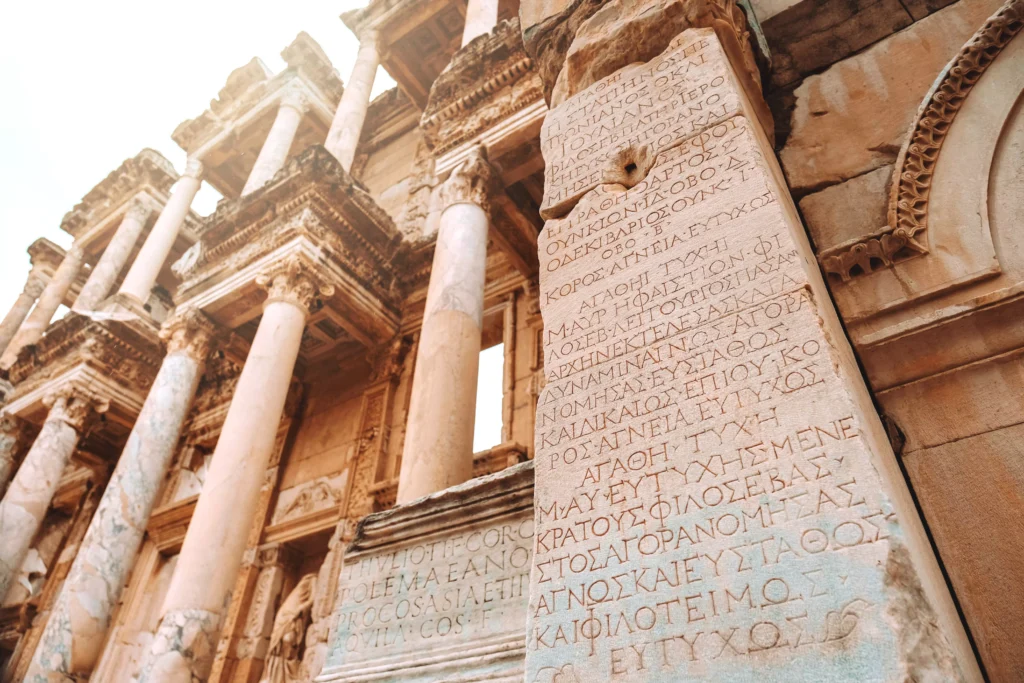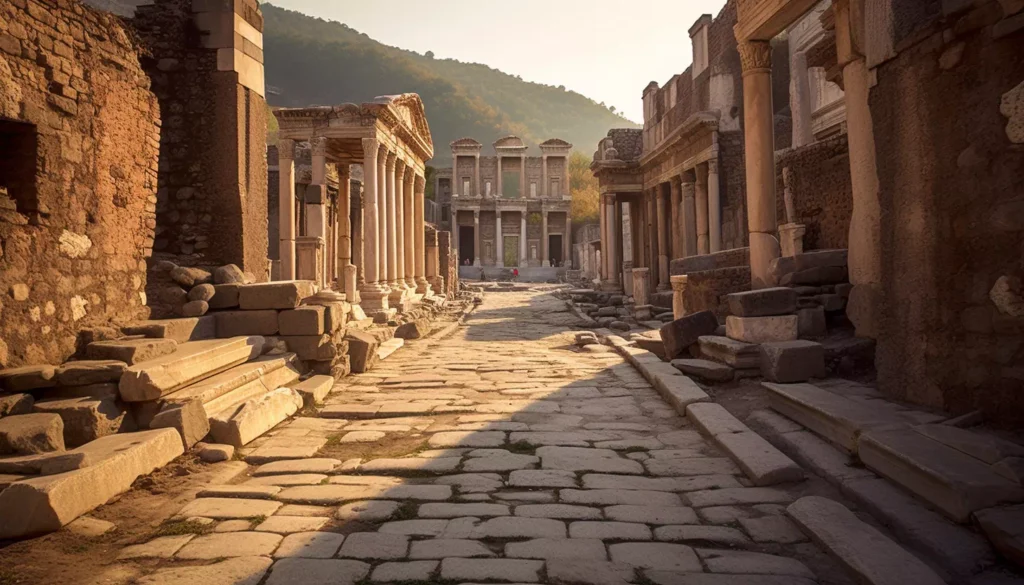
Ephesus Guide: History & Top Places to Visit
Step back in time and walk the marbled streets of antiquity with our comprehensive Ephesus guide. Once a vibrant port city and a bustling epicenter of trade, culture, and religion in the ancient world, Ephesus remains one of the most magnificent and best-preserved archaeological sites on the planet.
This guide will navigate you through its rich history, from its early Greek origins to its prominence in the Roman Empire and its significant role in the dawn of Christianity. Discover the must-see monuments and hidden gems that make a visit to this UNESCO World Heritage site an unforgettable journey.
The Enduring Legacy: A Brief History of Ephesus
The story of Ephesus spans thousands of years, a narrative woven with threads of conquest, commerce, and faith. Its strategic location on the Aegean coast made it a coveted prize for empires and a melting pot of diverse cultures.
From Greek Colony to Roman Metropolis
Founded in the 10th century BC by Attic and Ionian Greek colonists, the city truly began to flourish after it was bequeathed to the Roman Republic in 133 BC. Under Roman rule, Ephesus became the capital of the province of Asia Minor and grew into one of the largest cities in the empire, with a population exceeding 250,000.
It was a hub of architectural innovation, philosophical thought, and commercial activity. The Romans expanded upon the existing Greek structures, leaving behind a legacy of monumental buildings that continue to inspire awe today.
A Pivotal Center for Early Christianity
Ephesus holds a place of profound importance in the history of Christianity. It is mentioned numerous times in the New Testament and was visited by key figures like Saint Paul, who lived and preached here for over two years.
It is also believed to be the city where the Apostle John wrote his gospel and spent his final years. The city hosted the Council of Ephesus in 431 AD, a critical event that affirmed the title of Theotokos (Mother of God) for Mary. This deep connection to early Christian history adds a powerful spiritual dimension to any visit.
Top Places to Visit: The Unmissable Sights of Ephesus
The archaeological site of Ephesus is vast. To make the most of your visit, it is essential to have a plan. This Ephesus guide highlights the most significant structures you cannot miss.
1. The Library of Celsus
Arguably the most iconic facade in Ephesus, the Library of Celsus is a masterpiece of Roman architecture. Built between 110 and 135 AD, it was the third-largest library in the ancient world, housing over 12,000 scrolls.
Its stunning two-story front features intricate carvings and niches that once held statues personifying the virtues: Sophia (wisdom), Arete (virtue), Ennoia (thought), and Episteme (knowledge). Though the interior was destroyed by fire, the resurrected facade provides a breathtaking glimpse into the city’s intellectual past.
2. The Great Theatre
Carved into the slope of Panayir Hill, the Great Theatre is a colossal structure that could seat up to 25,000 spectators. Its sheer scale is a testament to the city’s size and cultural importance. This was not just a venue for dramatic performances; it was also a stage for political discussions, civic announcements, and gladiatorial contests.
Standing in the upper tiers, you can enjoy a panoramic view of the ancient city’s main thoroughfare, the Harbour Street, stretching towards the long-silted-up port.
3. The Temple of Artemis
Though little more than a single reconstructed column remains on its original site today, the Temple of Artemis was one of the Seven Wonders of the Ancient World. This colossal temple was rebuilt three times before its final destruction in 401 AD.
Dedicated to the Greek goddess of the hunt, its scale was immense, reportedly four times larger than the Parthenon in Athens. Visiting the site requires a short trip from the main archaeological park, but it is a necessary pilgrimage to understand the spiritual heart of ancient Ephesus.
4. The Terrace Houses (Slope Houses)
For a fascinating look into the daily lives of the city’s elite, a visit to the Terrace Houses is essential. Housed under a modern protective roof, these remarkably well-preserved Roman villas were once home to the wealthiest citizens of Ephesus.
They are adorned with stunning mosaics, intricate frescoes, and luxurious marble paneling. Walking through their courtyards and rooms provides an intimate and vivid picture of domestic life, luxury, and artistry in the Roman era. Note that a separate entrance fee is required, but the experience is well worth the extra cost.
5. The Odeon
This small, roofed theatre located near the Upper Agora was used for more intimate gatherings than the Great Theatre.
With a seating capacity of around 1,500, the Odeon hosted musical performances, poetry readings, and meetings of the city council (boule). Its elegant, semi-circular design is beautifully preserved, allowing you to easily imagine the political and cultural discussions that once filled the space.
Learn more details about the Ephesus
Exploring More of the Ancient City
Beyond the main highlights, the streets of Ephesus are lined with fascinating ruins that bring the city to life.
- Curetes Street: One of the main arteries of Ephesus, this marble-paved street stretches from the Library of Celsus to the Hercules Gate. It is lined with the remains of shops, fountains, and monuments.
- The Temple of Hadrian: Located on Curetes Street, this beautifully ornate temple was dedicated to the Emperor Hadrian. The reliefs on its facade depict mythological scenes and the city’s foundation story.
- The Fountain of Trajan: Another impressive monument dedicated to an emperor, this fountain once featured a massive statue of Trajan overlooking a pool of water.
- The Latrines: The public toilets offer a surprisingly interesting glimpse into Roman communal life and advanced engineering, featuring a sophisticated sewer system beneath the marble seats.
Beyond the City Walls: The House of the Virgin Mary
A short drive from the archaeological site, on Bulbul Mountain, lies a humble stone house and chapel believed by many to be the final home of Mary, the mother of Jesus. It is thought that the Apostle John brought her to Ephesus to ensure her safety. Today, it is a revered place of pilgrimage for Christians and a site of serene contemplation for visitors of all faiths.
Practical Tips for Your Ephesus Visit
To ensure your trip is smooth and enjoyable, this Ephesus guide offers some essential advice.
Planning Your Trip:
- Best Time to Visit: The best times to visit are during the spring (April-May) and autumn (September-October) when the weather is pleasant. Summers can be extremely hot, so if you visit then, go early in the morning or late in the afternoon.
- Getting There: Ephesus is located near the modern town of Selcuk. The nearest major city and airport are in Izmir, about an hour’s drive away.
- Tickets and Hours: The site has specific opening and closing times that vary by season. It is advisable to check the official museum website for the latest information on hours and ticket prices. Consider purchasing a comprehensive museum pass if you plan to visit other sites in the region.
Navigating the Site:
- Wear Comfortable Shoes: You will be walking extensively on uneven marble and stone surfaces.
- Bring Water and Sun Protection: There is very little shade at the site. A hat, sunglasses, and sunscreen are essential, especially in warmer months.
- Hire a Guide: To fully appreciate the history and context, consider hiring a licensed tour guide or getting an audio guide. A good guide can bring the stones to life with stories and historical facts.
- Allow Enough Time: Plan to spend at least 3-4 hours to see the main highlights without rushing. A full day is recommended to explore more thoroughly.
Ephesus is not just a collection of ruins; it is a direct link to the glories of the ancient world. Walking its streets, you can almost hear the echoes of chariot wheels, the chatter of merchants, and the pronouncements of emperors. This Ephesus guide provides the foundation for an incredible exploration, but the true magic lies in discovering it for yourself.

